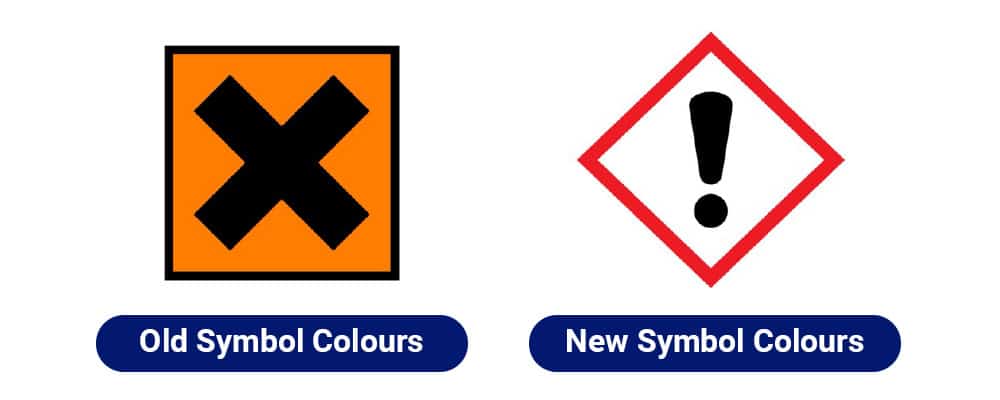
Hazardous substances are commonly handled, or used, in a variety of workplaces throughout the UK.
To ensure they comply with COSHH regulations, managers and employees first need to be able to identify them. They can then take the appropriate steps to protect themselves and their co-workers from harm.
This article provides answers to the question – what is a hazardous substance, looks at who is at risk, explains how to identify a hazardous substance, and provides links to further training and information on hazardous substances.
What is a Hazardous Substance?
Any type of substance that has the potential to cause harm can be classified as a hazardous substance. It can have one property that is hazardous, or it may have several. They can be corrosive, explosive, toxic or have the ability to oxidise.
Under the COSHH regulations, hazardous substances can be:
- Chemicals
- Products that contain chemicals
- Fumes
- Dusts
- Vapours
- Mists
- Nanotechnology
- Gases and asphyxiating gases
- Biological agents
- Germs that can cause diseases
The Health and Safety Executive (HSE) points out that some substances are not covered by the COSHH regulations, but instead have their own regulations. These substances include:
- Asbestos
- Lead
- Radioactive substances
COSHH Training
Our COSHH Training course provides basic awareness to trainees to help them identify the dangers and adopt safe working practices whilst working with hazardous substances, as well as, comply with the law.
Who is at Risk?
Cleaners, mechanics, factory workers, researchers and even hairdressers often work with hazardous substances and are at risk of illness, injury and even death.
The HSE defines exposure to hazardous substances as being when a person:
- Breaths in fumes, dust, gas or mist
- Comes into skin contact with the substance
- Injects a substance into the skin
- Swallows a substance
All exposure ‘must be controlled to as low as is reasonably practicable (ALARP)’.
Guidelines on how long a person should be exposed can be found on the HSE approved workplace exposure limits (WELs). It should be noted that the WELs do not cover all hazardous substances. Currently, the WELs are applicable to 500 substances, although the list is often amended and updated.
How Do I Know if a Substance Is Hazardous?
All manufactured substances that are deemed to be hazardous must have:
- Packing and labelling that identifies it as hazardous
- A Safety Data Sheet (SDS) that is supplied with the product
- A label that shows the name of a substance, describes the kind of harm it has the potential to cause, and some safety precautions
- A label must also describe the kind of hazard, for instance, if it is corrosive or toxic
- Visible hazard pictograms – A hazardous substance may have one or multiple pictograms on its packaging
Understanding the COSSH Symbols
At the time of writing, the COSHH hazardous substances pictograms are as follows:
- Explosive – Exploding bomb symbol
- Flammable – Flame symbol
- Oxidising – Flame over circle symbol
- Corrosive – Corrosion symbol, liquid poured from beaker onto hand and object
- Acute toxicity – Skull and crossbones
- Hazardous to the environment – Dead fish and blackened tree symbol
- Health hazard/Hazardous to the ozone layer – Exclamation mark
- Serious health hazard – Human figure with a white star on the chest
- Gas under pressure – Gas cylinder symbol
Pictograms clearly show the hazard associated with the substance, so the risk is clear – even if a person does not read English or the packaging text is damaged.
Up until 2016, the COSHH pictograms were orange with black text. Since then, the COSHH hazard pictograms are diamond shaped with a red border and have black pictures on a white background.

Unmarked Hazardous Substances
A workplace may contain hazardous substances that have been generated during a task. Wood dust is a good example. While wood itself is not a hazardous material and therefore is not required to be labelled, wood dust is considered to be hazardous to health.
It may also be the case that a workplace is storing chemicals or substances in containers other than the ones the products were shipped in.
Chemicals must be kept in their original containers to comply with COSHH. Containers must be stored securely and safely and any persons using the chemicals must have access to the associated Safety Data Sheet (SDS).
If a substance is found in an unmarked or poorly marked container, you should always consider it to be hazardous.
Where Can I Get More Information on Hazardous Substances?
To make sure that all hazardous substances in the workplace are assessed, handled and stored correctly, employees require training. Reputable, accredited hazardous substances training will make certain that your workplace maintains safety standards and COSHH compliance.
The Human Focus Hazardous Substances training courses provides you with the skills and knowledge you need to adhere to all COSHH regulations. You will be able to identify what is a hazardous substance, learn how to perform a COSHH assessment and learn industry-specific skills to ensure that you stay safe during your daily duties. All Human Focus Hazardous Substances courses can be taken online, in segments, at your convenience.





















